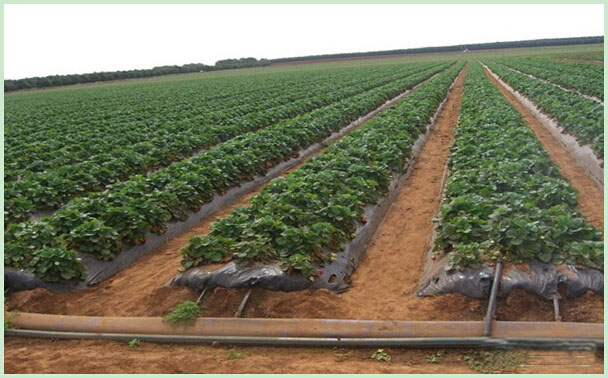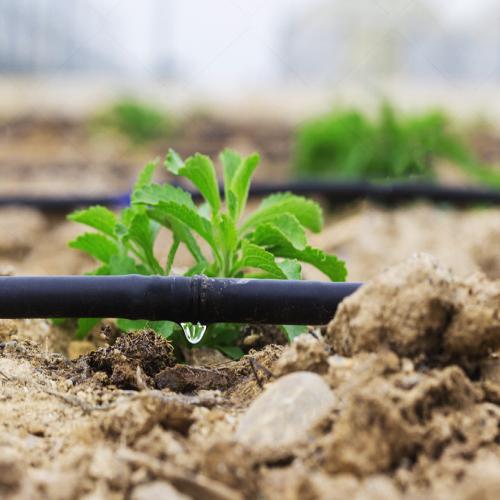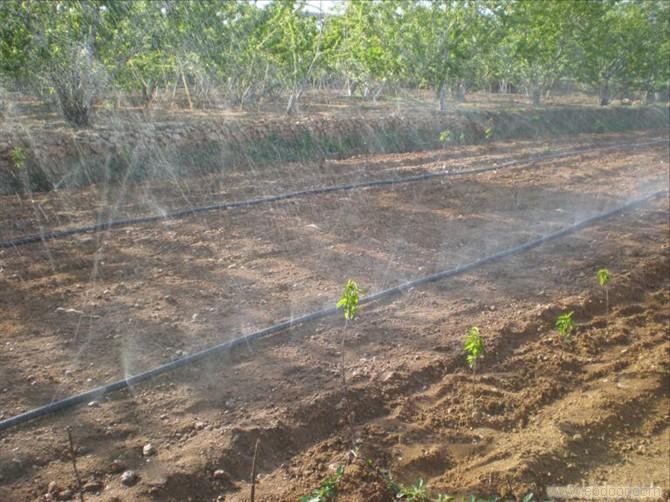1. Congestion blockage. Mainly caused by chemical fertilizers and water quality precipitation. First, some fertilizers remaining in the drip irrigation tubing after drip fertigation will precipitate, such as calcium sulfate, and block the flow path of the dripper. Second, if the drip irrigation water is hard water, the carbonate content is high, and long-term use will generate more scale in the pipe wall of the drip irrigation tubing to block the dripper.
2. Physical blockage. This is the main cause of clogging of drip irrigation tubing. The irrigation water quality is poor, the filtration system is not perfect, and the debris and other debris are pumped into the pipeline and the drip irrigation tubing. When passing through the serrated flow path of the inner dripper, the debris will block the flow channel and the dripper will not be able to discharge water.
3. Biological blockage. The roots of the crop invade the water hole, or the blockage caused by the growth of algae and other microorganisms in the irrigation water. The water-based and unbalanced irrigation of the roots of the crops causes the roots to grow into the drip irrigation water holes and protrude into the water outlet holes to cause blockage. If the algae and other biological contents in the irrigation water are abundant, the drip irrigation system is often combined with fertilization and irrigation, and the light-shielding facilities such as the fertilizer pool are not in place, which is likely to cause large-scale reproduction of microorganisms, and the inner wall of the drip irrigation is covered and blocked.

(1) Pretreatment of drip irrigation water. This is the most cost-effective way to prevent clogging. The stricter the pretreatment, the less physical clogging occurs. According to the water quality and flow rate, the wire mesh is used as the three trash racks at the water intake of the pump. The number of installed trash racks is from small to large, which can be 10-50 mesh respectively, and the suspended mud and debris are stopped. Or introduce the river water into the reservoir, reserve it after sedimentation, and cover it to prevent light from entering and algae breeding.
(2) Reasonably install the filtration system and drip irrigation tubing. According to the pre-treated water quality, the first part should be installed with sand filter, laminated type, screen type filter or combined for filtration treatment. The water quality can generally meet the standard of drip irrigation. If a small flow screen filter is installed behind the shed valve for secondary filtration treatment, the safety performance of the drip irrigation system against clogging can be greatly improved. When the drip irrigation tube is installed in the field, the drip hole on the drip irrigation tubing faces upward, so that a small amount of impurities in the water can be deposited at the bottom of the tube, and the root system is prevented from invading the drip irrigation hole.

(3) Correct use of drip fertigation. One is to use soluble fertilizer, and the fertilizer applicator must be installed before the filter. Second, the drip irrigation system can be fertilized normally after the filtration equipment is finished. After the fertilization is finished, the system should be rinsed with water for 15-30 minutes to prevent the remaining fertilizer in the pipeline from being precipitated.
(4) Rinse the drip irrigation tube regularly and clean the filter. When the newly installed drip irrigation tubing is used for the first time, open the plug at the end of the drip irrigation tubing, rinse it thoroughly, and rinse the impurities in the tube before starting to use. The drip irrigation should be washed again after 5 times. Always check the filter before filling, turn on the filter backwashing device to remove the impurities, remove the impurities accumulated on the filter screen in time, prevent the filter from clogging, and find that the filter is damaged in time.
(5) Chemical anti-blocking. For example, chemical clogging such as fertilizer occurs during drip irrigation, and acid cleaning can be performed if necessary to simultaneously disinfect, inhibit, and eliminate algae and microorganisms in the water. Commonly used acid such as perchloric acid, nitric acid, sulfuric acid, etc., the pH value is adjusted to 5.5-6.0 when used, the concentration must be strictly controlled during treatment to avoid harm to crops. When cleaning the acid solution, please reduce the system irrigation pressure to slow down the flow rate and improve the pickling effect. After the end, rinse with water. This method is prone to acidification of the soil and is recommended for caution!
What is the drip irrigation hose? Drip irrigation hose refers to the use of plastic pipe (drip ir...
Composition and installation of drip irrigation systems 1.Piping arrangement and installation: A...
Precautions for using drip irrigation system tape 1.Drip irrigation pipes and drip heads are easi...
A Big Success of Visit to Raingod Group by Mr H.E. Simon Pierre ADOVELANDE, Ambassador of Benin a...
Our company organized all the staff to visit Qingzhou, Shandong during 2016.7.14-15 with the smel...
Mulan paddock, a place of Qing Dynasty royal hunting, located in the northeast Hebei province(the...